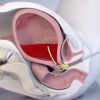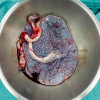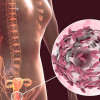
Iron Matters: Policy Shifts to Combat Anemia in Indias Women and Girls
Iron-deficiency anemia (IDA) continues to be a major public health concern in India, affecting over 40% of adolescent girls and women of reproductive age, according to WHO estimates. Despite nationwide initiatives such as the National Iron Plus Initiative (NIPI), recent years have witnessed a worrying increase in prevalence.
Emerging research indicates that innovative, multi-pronged approaches yield better outcomes than conventional supplementation alone. For example, Mehta et al. found that daily intake of iron-supplement bars for 90 days significantly improved hemoglobin and hematocrit levels in non-pregnant anemic women, with 70.8% achieving normal Hb without adverse effects. Similarly, Sontakke et al. demonstrated that mobile phone call reminders markedly improved adherence to iron therapy and boosted hemoglobin levels in pregnant women. Gupta et al. further reported that intermittent iron–folic acid (IFA) regimens were as effective as daily dosing in improving hemoglobin and ferritin levels, but were better tolerated.
Future Directions and Policy Imperatives
A robust, adaptable policy framework is essential to reverse current trends. Key priorities include:
1. Updating NIPI Guidelines – Align national protocols with the latest global evidence on dosage, frequency, and delivery models. Incorporating intermittent IFA regimens could enhance adherence and reduce side effects.
2. Strengthening Surveillance – Implement nationwide anemia monitoring using venous blood samples for accurate diagnosis and tracking.
3. Behavioural Interventions – Expand interpersonal counselling and community engagement through ASHA workers, schools, and local networks to address misconceptions and compliance barriers.
4. Integrated Preventive Measures – Combine supplementation with regular deworming, malaria prevention, and dietary diversification to tackle the root causes of anemia.
Sustained, evidence-driven action—uniting healthcare providers, educators, policymakers, and communities—is critical to breaking the intergenerational cycle of anemia and safeguarding the health of India’s women and girls.
Source: https://doi.org/10.51219/jih/muthulekshmi-saju/58














Please login to comment on this article